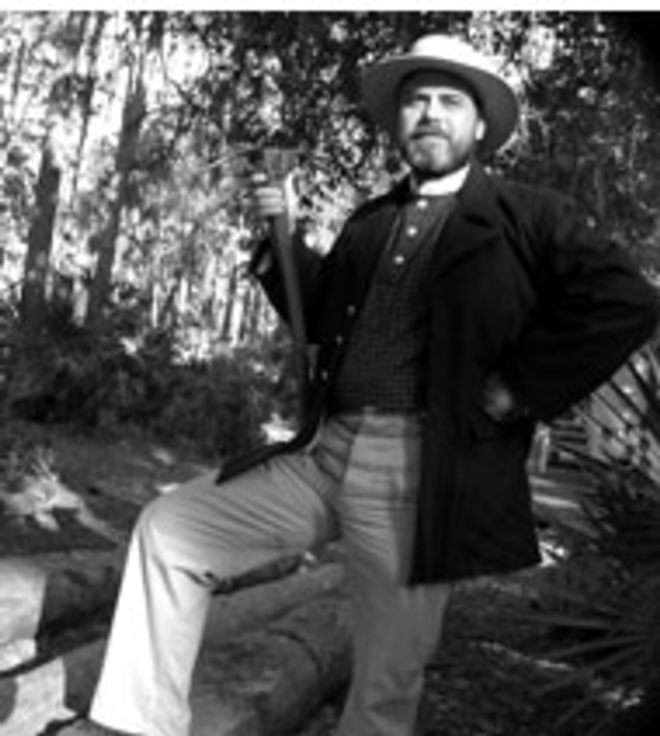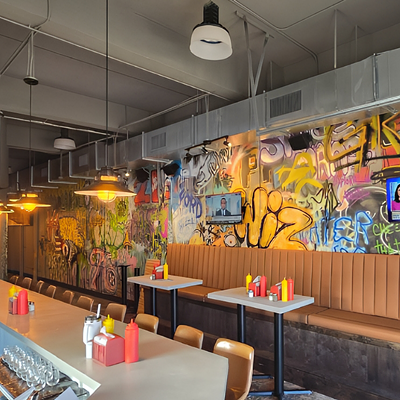
Streets don't get any more generic than Largo's Ulmerton Road: mile after mile of gray asphalt jammed with exhaust-spewing cars and lined with gas stations, fast food chains, grocery store chains, movie rental chains, home furnishing chains, tire chains and all the other architectural detritus of modern-day drive-thru life.
The ordeal of driving practically the entire length of Ulmerton makes arriving at the sanctuary of Heritage Village all the more delicious. The fragrant pine flatwoods provide shade and baffle the roar and stink of traffic. The birds are singing, the flowers blooming, the buildings aren't all shaped like boxes, and there's not a Taco Bell or Blockbuster sign in sight.
I hated history class in school. Impersonal facts — names and dates stripped of all their drama and related in clumsy, sober prose. Even worse were museums — crammed with dusty relics that made history look, and smell, dead. Most days I'd still rather visit a park (or, to be honest, even a Blockbuster) in my leisure time than a museum. But this place is different. Heritage Village is a park. And this museum is alive.
In fact, the 21-acre park/museum is called a living history village, and it contains more than 20 historically significant structures built in Pinellas County in the late-19th and early-20th centuries. Most were slated for demolition or in danger of being lost for some other reason before they were moved here to be preserved and renovated.
The village was founded in 1976 on land donated by the county in honor of the nation's bicentennial year. "The bicentennial is really when the historic preservation movement began," says Ellen Babb, historian and marketing coordinator for the village. "But it's not just about the structures; it's about the people in them who are part of Pinellas County's history."
To bring those people to life, the village brought on two living history interpreters this year. Paige Noel and Ed Reidell are sort of combination actors-historians-teachers. They research a particular historic period and then create a living microcosm of it, complete with clothing and activities from the time. "You make a much more long-lasting, tangible link to the past," says Reidell. "It's not just names and dates, but how people lived their lives. From that, you make a connection to the big dates."
"We develop things people can see, smell, hear and touch," says Noel. "Writing with a quill pen, beating rugs — studies show that by doing things, people remember better."
On a sunny November afternoon, the two are living in the past at Pinellas County's oldest surviving structure, a heart-pine log house built in 1852 by Captain James P. McMullen. It's a Cracker-style home with an open walkway in the center called a "dog trot" that captures cooling breezes and separates sleeping and sitting rooms from the heat of the kitchen. McMullen and his wife, Elizabeth, raised 11 children there. Historians believe that she was a midwife and delivered more than 55 babies in the house.
Reidell is chopping wood and Noel is sitting on the porch in a rocker, sewing. They taught summer camp workshops at the house this year in cooking, punching tin and knitting, even having the students make their own needles. They went fishing in Walsingham Lake and cooked over open fires. Despite the heat, the kids were very involved in the work, says Noel. "These kids who grew up in the age of the microwave were out there in 90-degree weather, heating coals. It takes time to make cornbread. The kids were so surprised by that."
The two are always working on new ideas for workshops. Noel is currently researching the uses of palmettos, and Reidell is developing a workshop on signs hoboes used during the Depression to alert one another about food, water and dangers. Noel and Reidell also operate a junior docent program, in which students can do their own research and develop activities around a certain historical period.
The interpreters haven't yet tackled the more sensitive aspects of early Pinellas County life, such as Jim Crow segregation, though there is evidence of it in at least a couple of buildings. A train depot, built in 1924, has separate waiting rooms for blacks and whites, and Union Academy, built in 1915, housed one of the first "negro schools" in Pinellas county and later served as a community meeting place for African Americans. "You have to be very careful how you approach such a painful topic," says Reidell. "There's a lot of discomfort, even among the docents."
In the meantime, Heritage Village staffers are working with historians and preservationists on long-term interpretive and restoration plans to bring more of the area's history to life. They also helped the school system develop a local history unit for third graders, and they host 16,000 school children a year. Museum Director Jan Luth says expanded programming is the result of a new direction for Pinellas County BOCC. "It's a whole philosophical shift toward more active, broad-based programming and making a lot of stuff happen at the parks."
That programming includes lectures, seminars and workshops for adults and children, plus special events such as the Pinellas Folk Festival (Jan. 31), the Florida African American Heritage Celebration (Feb. 28) and much more. Brochures are available in the museum for a self-guided walking tour of the buildings (some of which have costumed docents) and the nature trail, which contains plants used by native people and wildlife long before the European invasion.
The village's library and archives comprise a tremendous local resource, with historic books, yearbooks, directories that go back to 1908, newspapers, special collections, county records, oral histories, photos, maps and much, much more.
Christmas shoppers looking for something more unique than the typical mall fare should also visit the gift shop, housed in a 1930 cypress beach cottage from Madeira Beach. It features cards, books, dolls, soaps, sachets, linens, baskets, games, toys and lots more stuff, some of which is handmade by volunteers who also staff the store. All proceeds benefit Heritage Village.
I think I could get to like this history stuff yet.
Heritage Village is at 11090 125th Ave. in Largo. Admission is free, and hours are 10 a.m. to 4 p.m. Tues.-Sat. and 1-4 p.m. Sun. For more info: 727-582-2123 or www. co.pinellascounty. org/heritage.
Contributing Editor Susan F. Edwards can be reached at [email protected].















